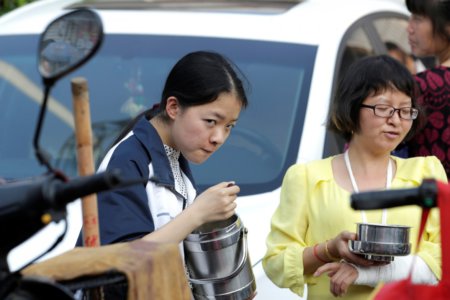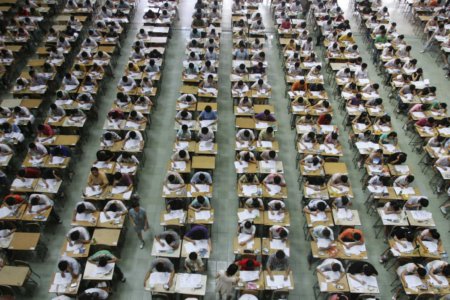
In 2018, the University of New Hampshire was the first flagship American higher education state institution to accept results from the Chinese national college entrance exam — known globally as the Gaokao — as part of its admission requirements.
Since then, many other international universities across the US, Australia, Canada, France, and more have started accepting Gaokao test results in admissions, opening more doorways for Chinese graduates to seek international paths.
Australia has led the way, with over 60% of its higher education institutions accepting undergraduate admissions with Gaokao results, as long as applicants successfully complete English language competence requirements. Examples include top-ranking institutions like Monash University, Australian National University, University of Sydney, UNSW Sydney, and more.
Why so?

For Chinese students, the Gaokao can determine their entire future. Source: AFP
The Gaokao is one of the hardest exams to exist
The Gaokao is the only admission requirement for higher education in China, and acts as a national benchmark to equalise opportunity and access to higher education across all economic levels.
Exams are spread across two or three days and held annually at the end of the school year.
It’s also one of the hardest exams to exist — the Gaokao opens up opportunities for admissions to prestigious Chinese universities, and the success rate is an abysmal 0.25%.
For most Chinese nationals, this gruelling exam is the norm, and the stakes are high. Chinese students commonly spend many years preparing for the Gaokao, even supplementing their studies with extra tuition and tutoring along the way.
Some study 14 to 16 hours daily to prepare for it, and there have been cases where students visited hospitals to access oxygen containers in hopes of improving their concentration.

Being good isn’t enough — you have to be the best to qualify for a spot in China’s top universities. Source: AFP
A certain number of places are allocated for every university, and competition is fierce, with the Gaokao sifting the very best from the just plain good — and with over 10 million students taking it every year, the odds aren’t in their favour.
The strict and rigorous system has received plenty of criticism, but has remained the only method to test China’s students for nearly 70 years now; only the best get to attend the country’s top universities.
Graduates of top institutions have the opportunity to pursue postgraduate study in China or abroad and obtain high-level employment. The rest aren’t so lucky.
“Getting into a good college, such as the country’s equivalents of Oxbridge, Beijing’s Tsinghua, or Peking University, can lead to jobs with Western corporations or elite civil service positions,” journalist Lu-Hai Liang wrote in The Guardian in 2010.
“The ones who miss out will find spots in provincial universities or enrol in one of China’s less selective private institutions.”
But now, those who miss out on spots in China’s prestigious universities have another option — to go abroad.

Chinese students now have a second chance abroad. Source: AFP
More international pathways for Gaokao graduates
With such a rigorous exam structure and requirements, it’s no wonder that the Gaokao produces some of China’s most elite graduates, and international higher education institutions are keen to recruit these talents.
This is a second lease of life for Gaokao graduates. Before this, failure to secure a spot in China’s universities meant they had to retake the exam in the following year, or settle for a less-than-ideal institution.
Now, they can use their scores to gain higher education opportunities abroad.
“Students who have prepared for the Gaokao have typically not entertained the idea of study abroad, and we are providing this option and opportunity,” says Andrew Chen, chief learning officer at WholeRen Group, in an interview with The PIE News.
Steve Lanier, the director of international undergraduate admissions at the University of Tulsa, says, “We feel confident with the millions of students that take the Gaokao that if we’re choosing the top tier, we’ll find some strong students.”
This article was last updated on May 16, 2025.










